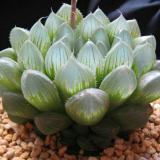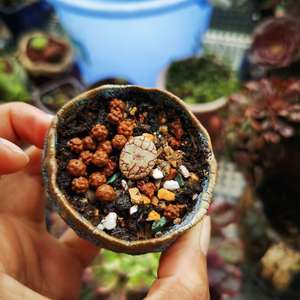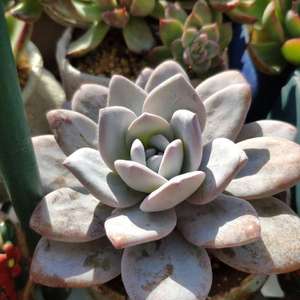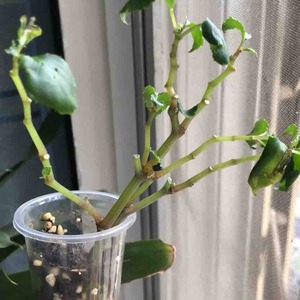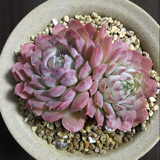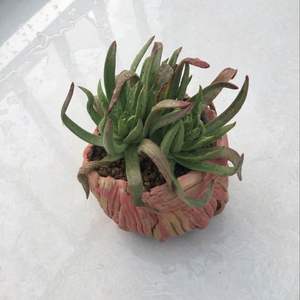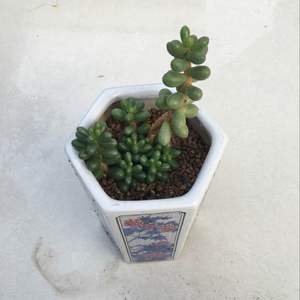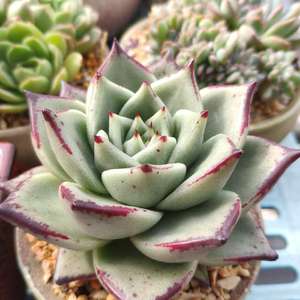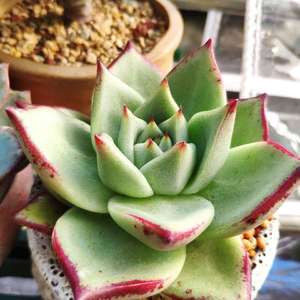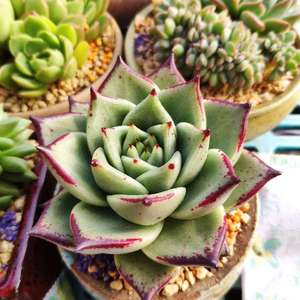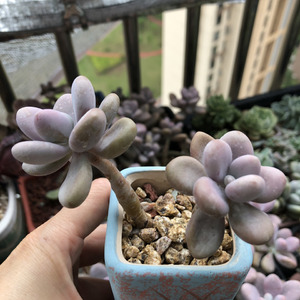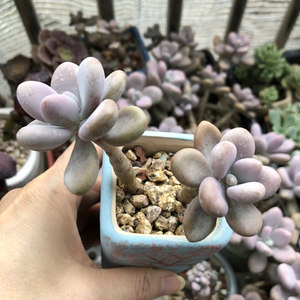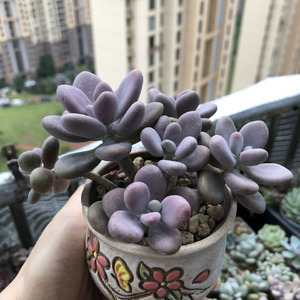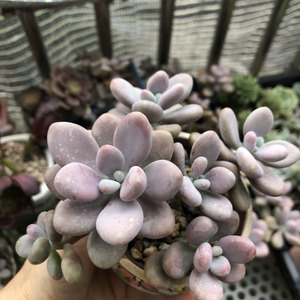文章
Miss Chen
2021年09月02日

Contrary to its name, the Australian tree fern is actually more tree than fern. Typically, when we think of ferns, we picture plants such as painted ferns (Athyrium niponicum), which achieve a mature height of just 18 inches. But in its native habitat of Australia, it can grow up to 25 feet or more. This tropical plant is easily too large for most indoor growing situations except for large greenhouses. Still, if your space and environment allow, it can be a beautiful addition to your landscape.
Characterized by lacy, feathery fronds, and a hair-like, scale-covered trunk, the fast-growing Australian tree fern can bring an exotic touch to any garden. It's best planted in the early spring and prefers warm temperatures and plentiful sunlight year-round.
Botanical Name Cyathea cooperi (also known by sphaeropteris cooperi)
Common Name Australian tree fern, Cooper's tree fern, lacy tree fern, scaly tree fern
Plant Type Evergreen fern
Mature Size 15–25 ft. tall, 10–12 ft. wide
Sun Exposure Partial shade, full shade
Soil Type Moist but well-drained
Soil pH Neutral to acidic
Bloom Time Non-flowering
Flower Color Non-flowering
Hardiness Zones 9–11 (USDA)
Native Area Australia
Australian Tree Fern Care
Australian tree ferns thrive in mid-elevation tropical environments, where they can sometimes be found growing in great, prehistoric forests swathed in tepid mist. The key to growing a healthy Australian tree fern is to provide it with ample humidity and consistency. Additionally, these plants are tolerant of salty winds near coastlines, but not salty soil conditions.
The trunk of the Australian tree fern starts out as a low, wide clump and spreads as much as six feet in a year before growing upward into a single slender trunk covered in glossy, ginger-brown hairs. The fronds are broad, bright green with triangular lacy leaves; they do not change color in the fall, and there are no flowers or fruit.
The Australian tree fern is one of the most commonly-used tree ferns in the tropics, but unless you live in Australia or a similar region, you may have to go out of your way to get an Australian tree fern. They're mostly grown as large, potted ornamentals in the United States and, when they are grown outdoors, are found mainly in public gardens and arboretums in tropical or semi-tropical zones. The plant has also naturalized itself in Hawaii, where it's regarded as invasive due to its fast growth and prolific self-propagation.
Light
Although Australian tree ferns are shade-loving plants in general, they can also thrive in partial sun or full sun locations where they get over six hours of light a day. Keep in mind, the more direct light the plant receives, the more likely it is that you'll need to increase your watering cadence.
Soil
Australian tree ferns can tolerate a variety of soil conditions including sand, loam, and clay. That being said, they will thrive best in a moist, loamy mixture that is rich but well-draining with a neutral to acidic pH level. It's also recommended that you add a layer of mulch around the tree, which will add more nutrients to the soil and act as a barrier to seal in moisture (particularly during very hot weather).
Water
Keep the soil moist at all times. Australian tree ferns are not drought-tolerant and need weekly watering, with especially high levels of moisture or humidity in dry weather. Avoid watering the crown directly as this can cause rot—instead, water the trunk and ensure it's consistently moist.
Temperature and Humidity
Australian tree ferns like a consistently warm and humid environment, with temperatures ranging from 65 to 80 degrees Fahrenheit. Australian tree ferns do not acclimate well to rapid changes in humidity or temperature, which can result in browning fronds. In colder areas, you can grow the fern in a container, giving you the flexibility to move it indoors for the fall and winter once temperatures drop too low.
Fertilizer
During the growing season, feed your Australian tree fern with controlled-release fertilizer monthly, or biweekly with weak liquid fertilizer. Larger specimens are heavier feeders and may require feeding every other week year-round.
Varieties of Australian Tree Ferns
There are about 1,000 different kinds of tree ferns, all found in tropical or subtropical settings. The New Zealand or Tasmanian tree fern is closely related, but the species is actually Dicksonia antarctica, and it tends to have a narrower crown than the Australian tree fern (but has similar growth requirements).
Potting and Repotting Australian Tree Ferns
An Australian tree fern will grow rapidly, so make sure you plant it somewhere in your landscape where it has room to grow and expand. If you're growing your tree fern in a container, replant it annually into a larger pot (with fresh soil). When the plant reaches the maximum size allowed by the growing space, stop repotting to slow growth. Eventually, it will likely outgrow both the pot and the room.
Common Pests and Diseases
While the Australian tree fern doesn't have any major issues with diseases or pests, it can be hit by the occasional bought of mites or mealybugs. Try first removing the infestation with strong sprays of water; if that doesn't work, treat the plant with neem oil or an insecticide until all signs of infestation have gone.
Characterized by lacy, feathery fronds, and a hair-like, scale-covered trunk, the fast-growing Australian tree fern can bring an exotic touch to any garden. It's best planted in the early spring and prefers warm temperatures and plentiful sunlight year-round.
Botanical Name Cyathea cooperi (also known by sphaeropteris cooperi)
Common Name Australian tree fern, Cooper's tree fern, lacy tree fern, scaly tree fern
Plant Type Evergreen fern
Mature Size 15–25 ft. tall, 10–12 ft. wide
Sun Exposure Partial shade, full shade
Soil Type Moist but well-drained
Soil pH Neutral to acidic
Bloom Time Non-flowering
Flower Color Non-flowering
Hardiness Zones 9–11 (USDA)
Native Area Australia
Australian Tree Fern Care
Australian tree ferns thrive in mid-elevation tropical environments, where they can sometimes be found growing in great, prehistoric forests swathed in tepid mist. The key to growing a healthy Australian tree fern is to provide it with ample humidity and consistency. Additionally, these plants are tolerant of salty winds near coastlines, but not salty soil conditions.
The trunk of the Australian tree fern starts out as a low, wide clump and spreads as much as six feet in a year before growing upward into a single slender trunk covered in glossy, ginger-brown hairs. The fronds are broad, bright green with triangular lacy leaves; they do not change color in the fall, and there are no flowers or fruit.
The Australian tree fern is one of the most commonly-used tree ferns in the tropics, but unless you live in Australia or a similar region, you may have to go out of your way to get an Australian tree fern. They're mostly grown as large, potted ornamentals in the United States and, when they are grown outdoors, are found mainly in public gardens and arboretums in tropical or semi-tropical zones. The plant has also naturalized itself in Hawaii, where it's regarded as invasive due to its fast growth and prolific self-propagation.
Light
Although Australian tree ferns are shade-loving plants in general, they can also thrive in partial sun or full sun locations where they get over six hours of light a day. Keep in mind, the more direct light the plant receives, the more likely it is that you'll need to increase your watering cadence.
Soil
Australian tree ferns can tolerate a variety of soil conditions including sand, loam, and clay. That being said, they will thrive best in a moist, loamy mixture that is rich but well-draining with a neutral to acidic pH level. It's also recommended that you add a layer of mulch around the tree, which will add more nutrients to the soil and act as a barrier to seal in moisture (particularly during very hot weather).
Water
Keep the soil moist at all times. Australian tree ferns are not drought-tolerant and need weekly watering, with especially high levels of moisture or humidity in dry weather. Avoid watering the crown directly as this can cause rot—instead, water the trunk and ensure it's consistently moist.
Temperature and Humidity
Australian tree ferns like a consistently warm and humid environment, with temperatures ranging from 65 to 80 degrees Fahrenheit. Australian tree ferns do not acclimate well to rapid changes in humidity or temperature, which can result in browning fronds. In colder areas, you can grow the fern in a container, giving you the flexibility to move it indoors for the fall and winter once temperatures drop too low.
Fertilizer
During the growing season, feed your Australian tree fern with controlled-release fertilizer monthly, or biweekly with weak liquid fertilizer. Larger specimens are heavier feeders and may require feeding every other week year-round.
Varieties of Australian Tree Ferns
There are about 1,000 different kinds of tree ferns, all found in tropical or subtropical settings. The New Zealand or Tasmanian tree fern is closely related, but the species is actually Dicksonia antarctica, and it tends to have a narrower crown than the Australian tree fern (but has similar growth requirements).
Potting and Repotting Australian Tree Ferns
An Australian tree fern will grow rapidly, so make sure you plant it somewhere in your landscape where it has room to grow and expand. If you're growing your tree fern in a container, replant it annually into a larger pot (with fresh soil). When the plant reaches the maximum size allowed by the growing space, stop repotting to slow growth. Eventually, it will likely outgrow both the pot and the room.
Common Pests and Diseases
While the Australian tree fern doesn't have any major issues with diseases or pests, it can be hit by the occasional bought of mites or mealybugs. Try first removing the infestation with strong sprays of water; if that doesn't work, treat the plant with neem oil or an insecticide until all signs of infestation have gone.
0
0
文章
Miss Chen
2020年10月19日

养殖多肉植物女王花笠要提供1:1配制的泥炭土和粗砂排水土壤,保证18~25℃的温暖生长环境,7天左右浇水一次,避免叶片溅水,每周施肥一次,并使其接受7小时以上散光进行旺盛生长。还可对其进行播种、分株或扦插,使其生根发芽。
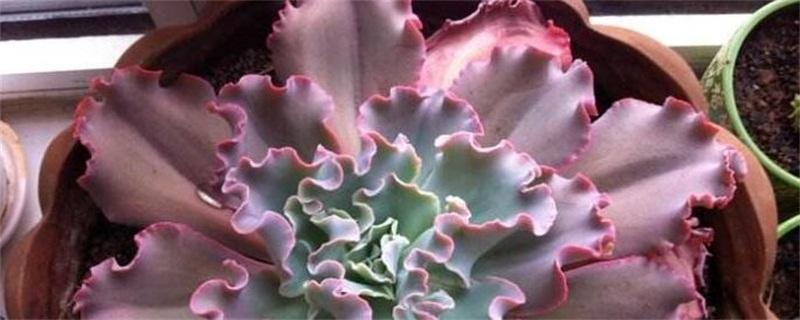
1、排水沙土
多肉植物女王花笠对于土壤要求较高,需要选择排水性能好的疏松沙土,以免其出现排水不畅导致积水,从而让其烂根生长不良。可用常见的泥炭土和透气排水的粗砂进行等比混合,之后再在里面添加适量骨粉,使其肥沃。
2、温暖环境
养护多肉植物女王花笠还要使其生长环境温暖舒适,最好将温度稳定在18~25℃左右,避免冬季出现10℃以下低温,夏季温度也不可高于30℃,以免其因为温度不适而生长不良,使其不能够健康茁壮进行生长。
3、水肥管理
在多肉植物女王花笠怎么养中要注意其对水分需求不高,一般7天左右为女王花笠浇水一次即可补充水分使其正常生长,平常喷水时也要避免喷到叶面上,还要为其每月施肥一次,以磷钾肥为主使其养分充足。

4、充足光照
喜光的多肉植物女王花笠要摆放在阳光充足的位置,让它可接受7小时以上的阳光照射,从而让其生长更好,株型变得更紧凑而叶片变得艳丽起来,有着更好的观赏价值。但不可使其接受强光,以免暴晒使其枯萎死亡。
5、繁殖方法
养护多肉女王花笠时还可选择对其进行播种、扦插和分株繁殖,播种时需用薄土覆盖种子,保持16~19℃适宜温度15~20天可发芽;或是将其幼株分离直接栽种在花盆中;也可将叶片剪下后晾干伤口,平放在沙土上让其生根。

1、排水沙土
多肉植物女王花笠对于土壤要求较高,需要选择排水性能好的疏松沙土,以免其出现排水不畅导致积水,从而让其烂根生长不良。可用常见的泥炭土和透气排水的粗砂进行等比混合,之后再在里面添加适量骨粉,使其肥沃。
2、温暖环境
养护多肉植物女王花笠还要使其生长环境温暖舒适,最好将温度稳定在18~25℃左右,避免冬季出现10℃以下低温,夏季温度也不可高于30℃,以免其因为温度不适而生长不良,使其不能够健康茁壮进行生长。
3、水肥管理
在多肉植物女王花笠怎么养中要注意其对水分需求不高,一般7天左右为女王花笠浇水一次即可补充水分使其正常生长,平常喷水时也要避免喷到叶面上,还要为其每月施肥一次,以磷钾肥为主使其养分充足。

4、充足光照
喜光的多肉植物女王花笠要摆放在阳光充足的位置,让它可接受7小时以上的阳光照射,从而让其生长更好,株型变得更紧凑而叶片变得艳丽起来,有着更好的观赏价值。但不可使其接受强光,以免暴晒使其枯萎死亡。
5、繁殖方法
养护多肉女王花笠时还可选择对其进行播种、扦插和分株繁殖,播种时需用薄土覆盖种子,保持16~19℃适宜温度15~20天可发芽;或是将其幼株分离直接栽种在花盆中;也可将叶片剪下后晾干伤口,平放在沙土上让其生根。
0
0
成长记
笔润烟岚
2020年05月24日

夏季有点褪色,太正常不过。酷暑将至,宝宝要加油哦~小满后第六天,今日有雨凉爽。西北风大,气温18到23度,湿度79%~肉肉们前日夜里叶面喷了恶霉灵,统统不遮阳不遮雨~
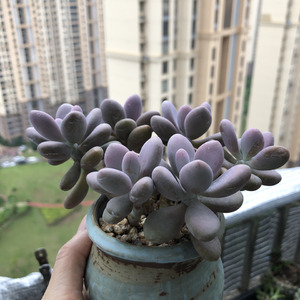



0
0




